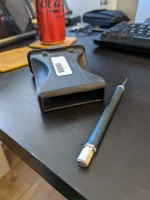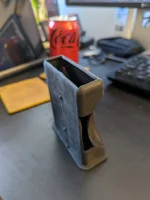Thank you, Dr. Do you think connecting via b luetooth is just as good, or better, than connecting with a cable?
Uh oh... you've opened a can of worms now!
🙂
I think an easier question to answer would be, do your ears notice any difference? The answer to that question would be, probably not.
First, we have to clarify that "connecting with a cable" can be further defined as either an analog signal or digital signal. If you're connecting your phone or music device via the 3.5 mm headphone jack, you're presenting an analog signal. If you're connecting via USB or TOSLINK, you're presenting a digital signal. For purposes of this discussion, we'll assume you're connecting via USB and presenting a digital signal. That gives us a baseline for an apples-to-apples comparison... or as close as possible. Maybe a granny smith to red delicious comparison, but I digress.
So, we've got a digital connection via Bluetooth and a digital connection via USB. While both signals are being encoded by the same source (your phone), it's highly likely they are not using the same protocol. Furthermore, the protocols may also be dependent upon whether your device is an Android or iPhone. It ultimately comes down to the DAC (digital-to-analog converter) in your car's infotainment controller. With respect to the Regal Sportback and TourX, the infotainment controller was changed halfway through the 2018 production run, which is how we got the whole red needle vs. white needle variations. Before the change, GM was using a Bosch controller and then switched to a Harman controller. That Harman controller was used in all models from 2018.5 through the final production run in 2020. Further complicating the matter, the Bosch controller has a user interface built on Qt, while the Harman controller uses an Android UI.
Without knowing very much about the Bosch and Harman controllers, I have to assume the DAC's have very similar specs. They may even be the same DAC. With that in mind, I would say your phone or music device is most responsible for determining the final quality of what you hear because it processes the source file and encodes it into the format received by your DAC. Bluetooth 5.0 introduced a significant upgrade to its encoding protocols. Today's high-resolution music requires more bandwidth to handle the increased bit depth and sampling rates, as well as the additional overhead for enhancements like Dolby ATMOS and 360 Reality Audio. Although very efficient, Bluetooth still requires the use of compression and buffering to create a pleasant user experience. Wired connections have fewer limitations and can deliver a cleaner signal to your DAC.
Clear as mud? In a nutshell, your ears aren't likely to notice much difference, but if you get down to the "nuts and bolts" a wired connection can reproduce signals better and faster.






